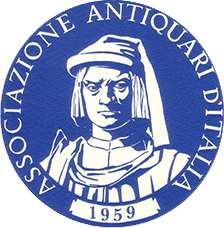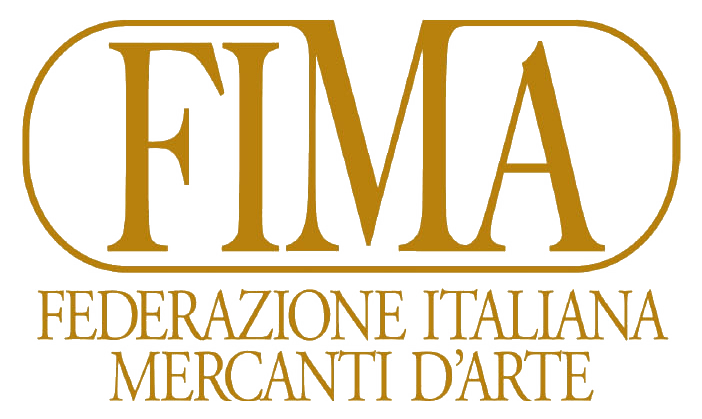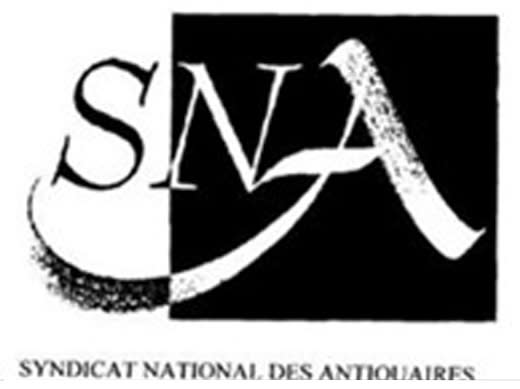Arrigo Minerbi
SELF-PORTRAIT (AUTOBIOGRAFIA)
Bronze
height 56 cm
height 22 1/8 in
height 22 1/8 in
Inscribed (on the reverse): Quest’Autobiogra a composi nell’anno MCMXVI Arrigo Minerbi
In 1916 Ferrara-born Arrigo Minerbi had just turned thirty-five and was still far from his Milanese heyday. After an early training on home ground and then at Florence where he...
In 1916 Ferrara-born Arrigo Minerbi had just turned thirty-five and was still far from his Milanese heyday. After an early training on home ground and then at Florence where he attended the school of nude at the Fine Arts Academy in 1902, he had moved to Genoa where he stayed until around 1917-18. However, he never lost touch with his home town and sent a number of works there. The first major turning-point in Minerbi’s career came soon after he moved to Milan when he met the great Adolfo Wildt. Wildt belonged to an earlier generation (being born in 1868) and was already an artist of renown. In 1919 the two men held a personal show at the Galleria Pesaro and this gave rise to an episode that made news at once with contemporaries. Minerbi was in search of greater visibility in Milan and Wildt volunteered to render a plaster model of his young colleague’s into marble. According to Vincenzo Bucci who published the story in “Emporium”, Minerbi replied: "If you think the portrait of my mother is worth your trouble, take it by all means. Wildt took the plaster model and the already roughed out marble and within seven days had finished a faithful likeness with the virtuosity in marble which he possesses." 'Mia madre' today stands in the Galleria Comunale d’Arte Moderna in Milan.
It may be that Wildt’s marble rendering of that likeness drove Minerbi shortly afterwards to embark on the marble version of his own selfportrait. This dates from 1922 and would end up in the Ferrara Civic Museum of Modern and Contemporary Art (one year after his death, the artist’s widow donated a part of Minerbi’s works to his home town collection). Significantly, a mere two years later, in 1924, the sculptor gave the Uffizi a bronze version of the same bust (which then passed to the Palazzo Pitti Modern Art Gallery; it now resides in the Pitti vaults). It is the inscription on this second bronze (the one shown here) that reveals how it was modelled some years earlier, in 1916. Like the portrait of his mother, therefore, it was not immediately turned into marble or bronze, but picked up by the artist some years later. This means that by 1924 he had reached an awareness of his own worth such as to warrant sending his own bust to the prestige Uffizi gallery of self-portraits, a matchless collection founded by Cardinal Leopoldo de’ Medici in the 17th century. Then as now, the self-portrait series was fast expanding and new acquisitions would be reported in the specialist reviews (in 1920, four years before Minerbi’s gesture, the “Cronaca delle belle arti” announced that the Gallery had acquired portraits of Halfdan Ström and Carlo Siviero). Just what store Minerbi set by promoting his own profile as an artist is clear from the autobiography that he published in 1953 (with a second edition in 1955). This illustrates the Autoritratto in marble – the sculptor preferred the more literary term Autobiografia – including a wrong indication of where it was kept: it was the bronze version that stood in the Uffizi. Minerbi claimed that the bust sent to Florence was made in 1915, though his text is subject to factual error and anyway the artist no doubt meant execution of the first model.
This second version of Minerbi’s bronze Self-Portrait is likely to have been cast at the same time as he sculpted the first, possibly because the artist wanted a copy for himself. The complex polygonal base is identical; if there is a difference, it is in the type of marble used. The “geometrically irregular cut of the base contrasts with the Rodinism of the head: in 1924 (when probably the bronze version was given to the Uffizi) Nebbia would call it a “head of minute workmanship and rich in intentions.” On the one hand we see a deliberate affinity with Wildt, especially in the technical skill both artists displayed; on the other, it is still anchored in late 19th century taste, a fin de siècle Rodin quality, which is typical of Minerbi’s output before he embraced the spirit of Milanese Novecento in the following years.
It may be that Wildt’s marble rendering of that likeness drove Minerbi shortly afterwards to embark on the marble version of his own selfportrait. This dates from 1922 and would end up in the Ferrara Civic Museum of Modern and Contemporary Art (one year after his death, the artist’s widow donated a part of Minerbi’s works to his home town collection). Significantly, a mere two years later, in 1924, the sculptor gave the Uffizi a bronze version of the same bust (which then passed to the Palazzo Pitti Modern Art Gallery; it now resides in the Pitti vaults). It is the inscription on this second bronze (the one shown here) that reveals how it was modelled some years earlier, in 1916. Like the portrait of his mother, therefore, it was not immediately turned into marble or bronze, but picked up by the artist some years later. This means that by 1924 he had reached an awareness of his own worth such as to warrant sending his own bust to the prestige Uffizi gallery of self-portraits, a matchless collection founded by Cardinal Leopoldo de’ Medici in the 17th century. Then as now, the self-portrait series was fast expanding and new acquisitions would be reported in the specialist reviews (in 1920, four years before Minerbi’s gesture, the “Cronaca delle belle arti” announced that the Gallery had acquired portraits of Halfdan Ström and Carlo Siviero). Just what store Minerbi set by promoting his own profile as an artist is clear from the autobiography that he published in 1953 (with a second edition in 1955). This illustrates the Autoritratto in marble – the sculptor preferred the more literary term Autobiografia – including a wrong indication of where it was kept: it was the bronze version that stood in the Uffizi. Minerbi claimed that the bust sent to Florence was made in 1915, though his text is subject to factual error and anyway the artist no doubt meant execution of the first model.
This second version of Minerbi’s bronze Self-Portrait is likely to have been cast at the same time as he sculpted the first, possibly because the artist wanted a copy for himself. The complex polygonal base is identical; if there is a difference, it is in the type of marble used. The “geometrically irregular cut of the base contrasts with the Rodinism of the head: in 1924 (when probably the bronze version was given to the Uffizi) Nebbia would call it a “head of minute workmanship and rich in intentions.” On the one hand we see a deliberate affinity with Wildt, especially in the technical skill both artists displayed; on the other, it is still anchored in late 19th century taste, a fin de siècle Rodin quality, which is typical of Minerbi’s output before he embraced the spirit of Milanese Novecento in the following years.
Join our mailing list
* denotes required fields
We will process the personal data you have supplied in accordance with our privacy policy (available on request). You can unsubscribe or change your preferences at any time by clicking the link in our emails.



